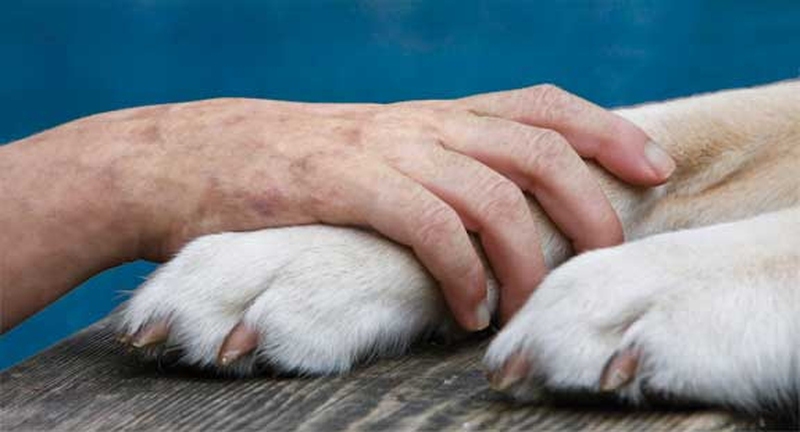Here are the 5 steps to success as a new pet parent. If you have a pet plan. just read on to make sure you get prepared of petting.

Part 1
PET-PROOF YOUR HOME
Dogs and cats love to explore new places in a variety of ways — smelling, licking, eating, jumping, scratching, etc. “Most people don’t consider the prep work they’ll need to do before picking out an animal,” says Kristen Collins, a behaviorist with the ASPCA Anti-Cruelty Behavior Team.
As a new pet parent, your job is to make sure items like chemicals, cleaning agents, clothes and shoes are either out of the house or out of reach for your furry friend. Keep your countertops and floors clear, cabinets locked, and electrical cords and wires out of sight or secure to walls. Make sure your pet has plenty of dog and cat essentials to play with, such as dog chew toys and cat scratching posts.
LEARN HOW TO CREATE A PET-FRIENDLY SCHEDULE
Schedules and set routines are an excellent way to encourage desired behavior. Pets are similar to children in this way. They need a regular routine, especially one that begins as soon as they are introduced to you and your new home. Here are a few of the more important schedules to enact:
Bathroom Schedule
Hopefully your new pet has been potty-trained (aka “housebroken”). If not, it will be helpful to initiate a bathroom schedule during the first few days/weeks in your home, especially for dogs. How often the bathroom breaks occur will mostly depend on the age of your new pet. Puppies and kittens (a few months old and younger) will urinate more often due to their small bladders and may need some assistance and encouragement. If an “accident” should occur, don’t fret. Simply clean the spot and show the animal where their “potty” is located (e.g., outside for dogs and litter boxes for cats). Accidents should occur less and less as your new pet becomes acclimated to the bathroom schedule, especially if you encourage the animal (e.g., praise, treats) when they use the potty correctly.
Playtime/Exercise Schedule
Over 50% of dogs and cats in America are overweight or obese, according to the Association for Pet Obesity Prevention. One factor for this extra weight is lack of playtime and exercise. Playtime can begin at any age and pets should be encouraged to participate daily, ideally 10-15 minutes a few times a day.
For an exercise routine, consult with a veterinarian. Many animals should not participate in rigorous exercise until about 12 months of age, and some dogs and cats may have special requirements during exercise due to underlying genetic or health concerns (e.g., brachycephalic, or flat-faced, dogs like the pug or bulldog may tire and overheat more easily). In most cases a regular exercise routine of walking or jogging 2-3 times a week for 15-30 minutes is recommended for dogs. Cats often prefer chasing/pouncing games rather than walking on a leash, but not every cat is the same.
Feeding Schedule
Measure out a portion of food at each meal, if possible, as this will limit the amount of calories your pet is eating at one time. You can meal feed or leave it for your pet to eat at his or her own pace.
CHOOSE A QUALITY DIET
Feeding pets a complete and balanced diet is a vital part of keeping them happy and healthy for years to come. Nutritional needs will vary depending on the pet’s life stage. For instance, the nutritional needs of a growing puppy or kitten are much different than those of a sedentary adult. A pet’s nutritional needs may change during his or her senior years. Consult your veterinarian to see what diet is best for your pet's specific life stage and lifestyle.
FOCUS ON POSITIVE TRAINING/WATCH FOR BEHAVIOR ISSUES
Be consistent with training from the beginning, but keep it positive. “There should be no need for yelling or physical punishment,” says Collins. “Set yourself up as a leader by asking for good behavior when doing even the simplest things, like preparing to go outside or eat dinner.”
If you encounter any behavioral issues, consult a veterinarian. He or she can help identify if it’s related to an underlying health issue and, if not, may have good recommendations for local pet trainers or behaviorists who can help you resolve the issue.
One common problem you may be able to prevent early on is separation anxiety. Many new pet parents unknowingly encourage such behavior by adopting a pet over the weekend, spending every moment with the animal and then leaving the dog or cat locked up once their “normal” Monday-Friday schedule begins. You can help prevent this anxiety by leaving your new pet alone with a fun toy for a few minutes every day and gradually increasing their “alone time.” Begin this routine on the first day you bring your pet home.
MAKE A VETERINARIAN YOUR #1 HEALTH/CARE RESOURCE
In many ways the veterinarian will be your most trusted advisor and the person you'll rely on the most when you have questions. Need advice on dog or cat food? See your vet. Not sure if you should neuter or vaccinate your pet? See your vet. Is your pet vomiting or scratching? See your vet. Veterinarians have a wealth of knowledge and experience taking care of animals, and they truly care about the wellbeing of your pet. So be sure and visit on a regular basis — once a year for the annual checkup, at a minimum.

View All Comments /Add Comment